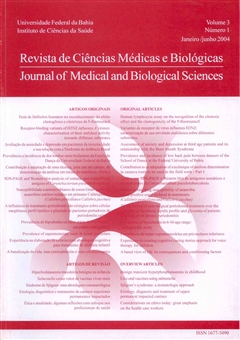Prevalence of supernumerary roots in lower premolars
DOI:
https://doi.org/10.9771/cmbio.v3i1.4412Keywords:
Bicuspid- Prevalence, Dental radiograph, Dental root.Abstract
Supernumerary roots consist of a developmental disturbance which can occur to any teeth, and knowledge about its occurrence is particularly important for the conduction of surgical or endodontic treatment of the affected tooth. In view of this reality, an attempt was made to determine the prevalence of supernumerary roots in lower premolars. The study was carried out with 200 periapical radiographs of the whole mouth, which totaled 800 teeth. This methodology was selected due to the possibility of analyzing radiographs of canines, premolars and lower molars using different ranges of horizontal angles, which enabled the identification of overlapped roots in the orthoradial incidence. The radiographs were submitted to the evaluation by an expert radiologist and the data underwent statistical analysis by means of sector graphs. The results showed that 14% (112) of the evaluated teeth presented supernumerary roots, of which 56% occurred in males and 44% in females. Concerning the eruption level, 61% were at the medium, 38% at the apical and 1% at the cervical 1/3 of the root. The most frequently affected tooth was the 1st premolar, which comprised 70% of the cases in comparison to 30% cases affecting the 2nd premolars. With regard to the type of occurrence, 67% were unilateral and 33% were bilateral while, of the latter, 82% occurred in the 1st lower premolars and 18% in the 2nd lower premolars.Downloads
Download data is not yet available.
Downloads
Published
2004-01-01
How to Cite
Dantas, J. A., Farias, D. A., Crusoé- Rebello, I. M., & Campos, P. S. F. (2004). Prevalence of supernumerary roots in lower premolars. Journal of Medical and Biological Sciences, 3(1), 76–81. https://doi.org/10.9771/cmbio.v3i1.4412
Issue
Section
ORIGINAL ARTICLES
License
The Journal of Medical and Biological Sciences reserves all copyrights of published works, including translations, allowing, however, their subsequent reproduction as transcription, with proper citation of source, through the Creative Commons license. The periodical has free and free access.


